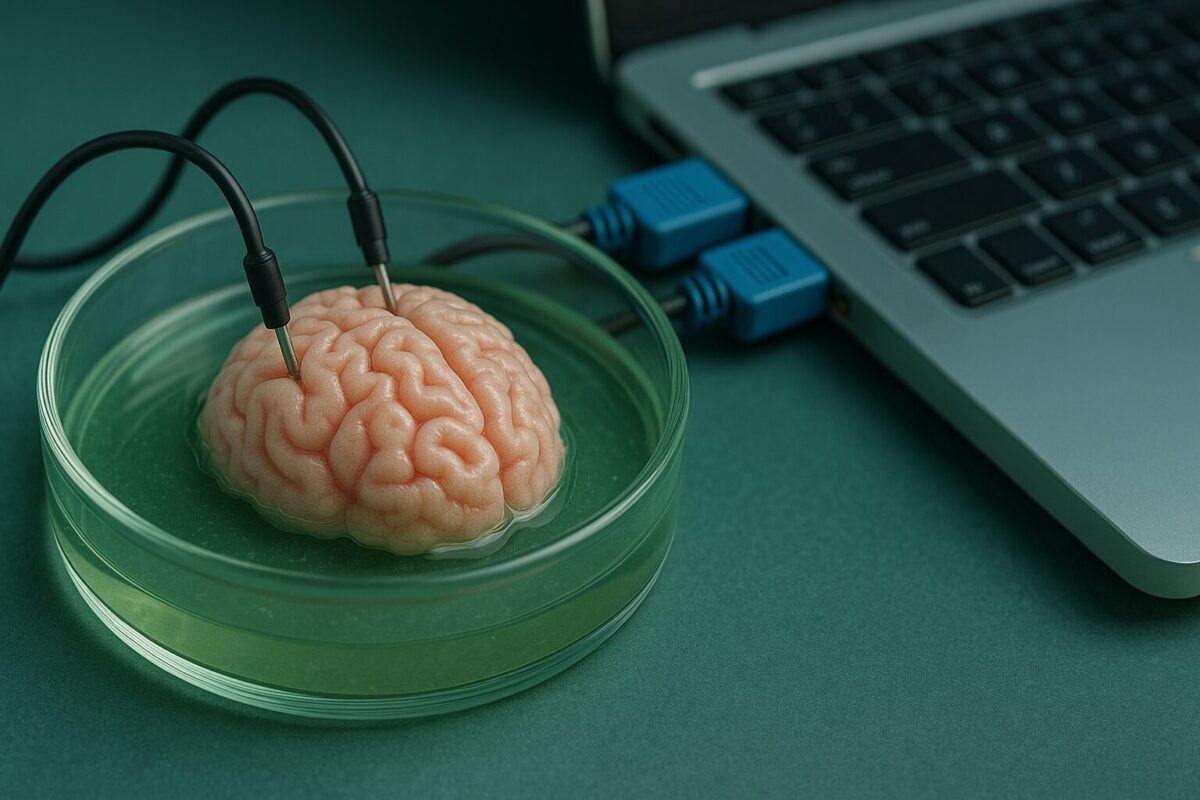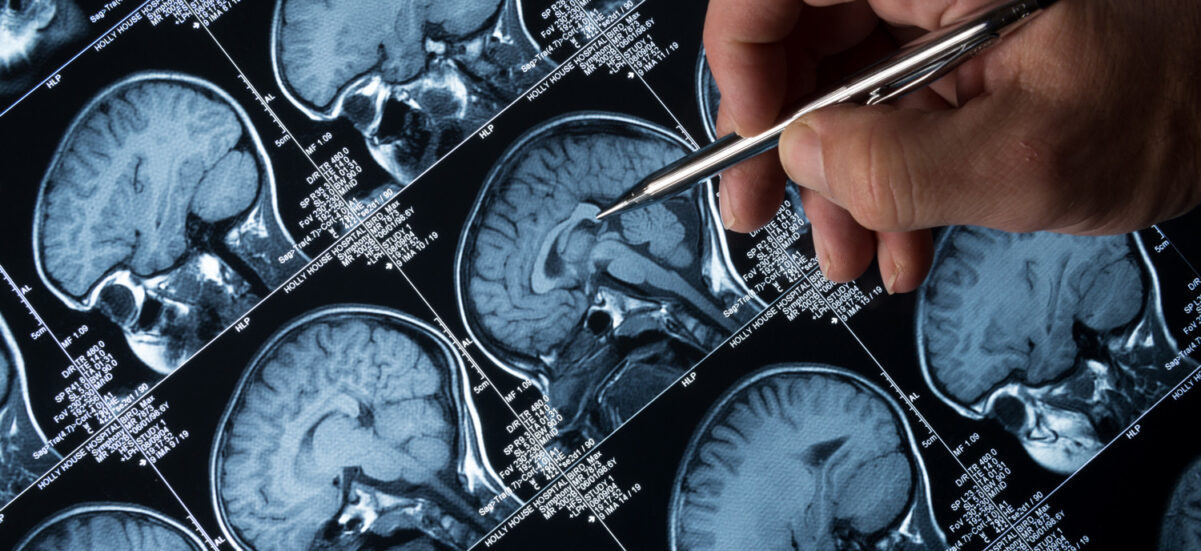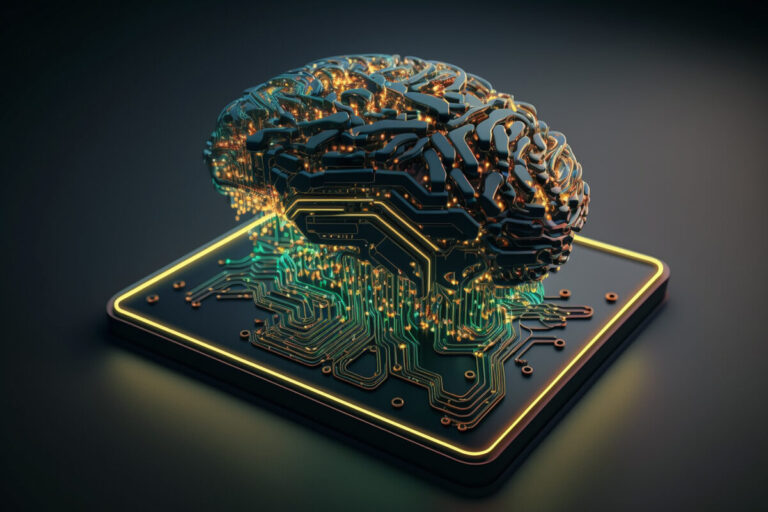
Organoid intelligence: how living neurons are changing science and AI in 2025
In the past three years, the concept of organoid intelligence (OI) has become a key topic in global scientific debates about the future of artificial intelligence. This is not about classical computer neural networks, but about biohybrid systems that use living human neurons grown in a laboratory to solve tasks previously thought to be the exclusive domain of “silicon intelligence.”
The term first appeared in 2022-2023, when an Australian team led by Carmelo Pardo and their startup Cortical Labs demonstrated that a culture of 800,000 living neurons could learn to play Pong a classic computer game and a historic benchmark for early artificial intelligence.
“These cells do not simply transmit chaotic impulses. They learn, adapt, and generate behavior that corresponds to the task,” explains Pardo in his Nature Electronics article (2022).
How Organoid Intelligence Is Created: Technology and Principles
An organoid is a miniature analogue of a human organ, created from cells in a laboratory. In the case of brain organoids, scientists use induced pluripotent stem cells (iPSC), which can transform into neurons and then self-organize into a simple structure resembling an early embryonic brain.
The DishBrain technology:
- Neurons are grown on a microelectrode array (a sensitive plate), which allows for both the transmission of electrical impulses and the recording of the cells’ reactions.
- Special interfaces convert these impulses into “input data” (such as the position of the ball in Pong), and “output” impulses control the movement of the paddle.
- The core principle is reinforcement learning: the system receives a “positive” or “negative” stimulus, and gradually learns to perform tasks more effectively.
How an Organoid Differs from Classical Artificial Intelligence
- Energy consumption: living neurons use tens of thousands of times less energy than computer chips for the same calculations.
- Flexibility: the biological network “weaves” and rewires itself independently, without external programming.
- Adaptation: the organoid can adapt to new types of data faster than a classical neural network.
“A living brain in a Petri dish learns in minutes, not weeks. That’s a fundamental advantage for biomedical research,” says Professor Thomas Hartung, head of the OI project at Johns Hopkins University.
Capabilities and Limits: What Research Has Already Shown
Facts:
- In laboratory experiments, DishBrain “memorized” specific patterns of signals, reacted to environmental changes, and developed primitive “memory.”
- However, the level of this memory is comparable to the brain of a premature infant at a very early stage (1-2 million neurons in contrast to over 86 billion in an adult human).
- Organoids are capable of learning and processing simple signals but have no sense of self, no consciousness, and no capacity for abstract thought.
Key terms:
- Synapse: the junction between two neurons, through which electrical impulses are transmitted.
- Plasticity: the property of brain tissue to change in response to learning or injury.
- Memory (in biology): the ability of a neural network to retain traces of previous stimuli and respond differently upon repeated exposure.
Why Organoid Intelligence Has Sparked Debate Beyond Science
The real controversy has emerged around one question: can a mini-brain feel anything like pain, or does it have subjective experience?
“We only observe electrical activity, which is hard to call consciousness. But as the system grows more complex, we must establish new ethical standards,” comments Thomas Hartung for Science (2023).
So far, no organoid has shown any sign of consciousness or self-reflection. Still, leading labs are adopting strict protocols: limits on growth size, restrictions on experiment duration, independent oversight for ethical compliance.
Practical Applications: Why Organoids Matter for Biomedicine and IT
- Disease modeling: organoids are used to recreate rare genetic brain disorders and test new drugs.
- Research into learning and memory: scientists study how pathologies develop (for example, in Alzheimer’s or epilepsy).
- Biohybrid computers: in the future potential creation of “living processors” for tasks that classical electronics cannot solve.
Does Organoid Intelligence Pose a Threat to Humans?
Leading scientists agree: for now, organoid intelligence is just a tool, not a subject. It does not feel, does not think in the human sense, and is used exclusively for modeling and analysis.
“This is not the ‘brain in a vat’ of science fiction. It’s a biological computer designed for very narrow tasks,” summarizes Gareth Moore, neuroscientist at Oxford.
- Organoid intelligence is a new tool for biomedicine and neuroscience that will help us understand how the brain works.
- It does not threaten humans and is not a prototype of “artificial consciousness.”
- The real breakthrough is that, for the first time in history, bioengineers are combining living tissue with digital environments, creating a unique “bridge” between biology and technology.
Glossary:
- Organoid: a miniature structure grown from cells that mimics a real organ.
- Induced pluripotent stem cells (iPSC): cells that can become any type of cell in the body.
- Microelectrode array: a device for interfacing between biological tissue and a computer.














